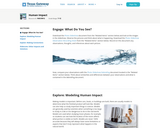
In this activity, students use a model to better understand the impact that humans might have on water supplies.
- Subject:
- Science
- Material Type:
- Activity/Lab
- Provider:
- Texas Gateway for Online Resources
- Date Added:
- 03/29/2017

In this activity, students use a model to better understand the impact that humans might have on water supplies.

In this lesson, students discover how changes in climate over the Colorado watershed are reducing the amount of fresh water available in the river. They also see how the population of the region that uses this water has grown, resulting in increasing demands on a dwindling resource. The case study presented in this lesson introduces students to a real drought that has been developing in the Colorado River basin for many years. The Colorado River is the major source of water for people in the driest part of the United States. More than 30 million people in 7 states depend on this river as the primary source of their water.

Students use a decision-making process to explore the complex nature of real-world environmental conflicts and how they get resolved. Students will explore the geographical, cultural, and political context of the social issue within the case, identify the stakeholders and their role and impact, and map out the intended and unintended consequences from the decision that was made.
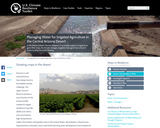
In the Arizona desert, farmers depend on an ample supply of irrigation to grow their crops. As climate changes, irrigation managers face a host of issues to keep the water flowing.

This article discusses how the rise in population and urbanization in Pakistan has contributed to shortages in what the rivers can provide.

During this extended unit, students will explore environmental sustainability from a number of different perspectives. They will dive deep into global policies regarding the environment, specifically the dedication of different countries to the Millennium Development Goals (MDGs). Students will review and discuss specific case studies, offering their opinion of certain practices and policies. As a summative assessment, students will create a “Call to Action†project, with the intent of raising awareness and instigating action on environmental sustainability. This unit includes language (objectives, vocabulary, and lesson modifications) that will help the teacher meet the needs of ELL students. These strategies may be helpful for other students, as well.

Students investigate the interconnectedness of the Earth's water reservoirs by learning about the hydrosphere. They then discuss ways in which humans are connected to and alter those reservoirs, especially the ocean.

Problems with Water DistributionGiving us credit when you use our content and technology is not just important for legal reasons. When you provide attribution to CK-12 Foundation, you support the ability of our non-profit organization to make great educational experiences available to students around the world.Our Creative Commons License welcomes you to use our content and technology when you give us attribution. If you have any questions about our policies, contact us at support@ck12.org
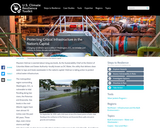
Changing conditions spur a utility in Washington, D.C., to consider and address its future climate vulnerabilitie

Protecting the Water SupplyGiving us credit when you use our content and technology is not just important for legal reasons. When you provide attribution to CK-12 Foundation, you support the ability of our non-profit organization to make great educational experiences available to students around the world.Our Creative Commons License welcomes you to use our content and technology when you give us attribution. If you have any questions about our policies, contact us at support@ck12.org

In this lesson, students will practice rapid ideation—an important step in design thinking—by brainstorming solutions to issues surrounding global water use and conservation.
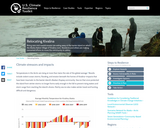
Rising seas and coastal erosion are eating away at the barrier island on which the Alaska Native Village of Kivalina rests. Residents and others are making concerted efforts to move the community to safety.

In this lesson, students learn about the interconnectedness of land use, water quality, and water resource management. Students are assigned a river front parcel of land to develop, unaware that each parcel is connected to someone else's parcel. Each team presents their development choices to the class and learns that all of the river sections are contiguous, leading to discussions about the effects of development and downstream water quality issues.

In this virtual resource, students will model the function of a watershed, and apply these concepts to an investigation of how water flows on their school grounds.
The wakelet site features videos demonstrating hands-on activities for students to complete at school in small, socially-distanced settings. Activities may also be adapted for at-home learning. Some activities incorporate an outdoor component, acknowledging the need to balance screen time with green time to support mental health. Tips for taking your students outside can be found here: https://education.eol.org/cnc_materials/TipsForTeachingOutside.pdf

In this tutorial students will learn about the parts of the hydrsphere such as aquifiers, wetlands, and watersheds.

In the PBS NewsHour Student Reporting Lab video, "Colonia residents demand clean, safe water," Las Cruces High School students describe climate changes and human activities which impact quality and availability of groundwater, a natural resource of drinking and household water for over 1.5 million Americans. Students gather information from a low-cost physical model and from USGS (United States Geological Survey) and EPA (Environmenal Protection Agency) internet resources. Students then choose a part of the groundwater and well problem, propose a solution and defend their proposal.

This article discusses the use of satellites in monitoring groundwater.

This problem-based case study looks at the environmental problems found within the fictitious Coley River system in the county of Midshire. The environmental problems found in the river are organic, inorganic, and physical in nature.

This lesson uses Landsat imagery to introduce students to remote sensing as a tool that is used by water resource managers to understand land use and hydrologic changes. Students will investigate the water budget for Falls Lake, NC from 2007-2009 by analyzing satellite imagery and hydrologic data from the US Army Corp of Engineers and will learn about the interrelationship between hydrologic and human systems.
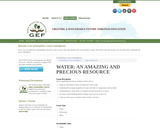
Students will begin with a water audit pre-lesson to determine their own personal water usage. They will then participate in a class activity to learn how water’s physical properties and chemical composition are essential to life on Earth. Once they understand water’s importance, they will debate water distribution issues, have an understanding of the consequences of water scarcity, and come up with ways to conserve water in their own lives.